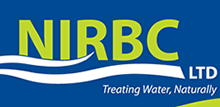
FAQs
What is a reed bed?What is a constructed wetland?
What are the advantages of a reed bed waste water management scheme?
How much does it cost to install a reed bed?
-
What is a reed bed?
Essentially, a reed bed is an artificially created wetland planted with specially choosen species of reed that have the ability to absorb oxygen from the air and release it through their roots. The roots also keep pathways open for the passage of water through the bed. This creates ideal conditions for the development of huge numbers of micro-organisms/bacteria which are able to break down any soluble material present, such as waste water effluent.
A reed bed, or constructed wetland, is created by excavating an area, into which is laid a watertight liner. A media layer, usually gravel, is placed on top of the liner to a depth of about half a metre. Reeds are then planted in the gravel layer. The wastewater is introduced either from the side of the bed (horizontal flow), or from above (vertical flow), and the treatment begins.
The treatment bacteria, which occur naturally on the surface of the stones (the biofilm), change the chemical composition of contaminants as the water passes through the bed.
Simple control systems are incorporated to retain water and maintain level and flow. Usually, reed beds are designed in sequential stages to treat water to the required standard. Following treatment, the water passes out of the reed bed, where it is clean enough to be discharged to a watercourse. -
What is a constructed wetland?
A constructed wetland is a generic term for all wetland installations. Some constructed wetlands are engineered rectangular reed beds and some involve modification of natural water courses to store or treat water.
A constructed wetland is any modification of a watercourse to a wetland environment, whereas a reed bed is an engineered installation which isolates untreated water from the environment until satisfactory treatment has taken place. -
What are the advantages of a reed bed waste water management scheme?
* Low maintenance
* Low capital and operational costs
* Natural, biological processes
* Avoids the need for chemical treatment
* No operational noise
* Treated water can be recycled for irrigation
* More aesthetically acceptable than other treatment systems
* Capable of treating very low/intermittent flows
* Capable of treating flows from residences/businesses not connected to main sewerage system -
How much does it cost to install a reed bed?
On a case by case basis, the need for design, installation, maintenance and consultancy varies. For this reason, NIRBC treats each case individually Please contact William McBarnet, managing director of NIRBC Ltd to discuss your reed bed, constructed wetland or SUDs requirements and a personal quote will be drawn up.

